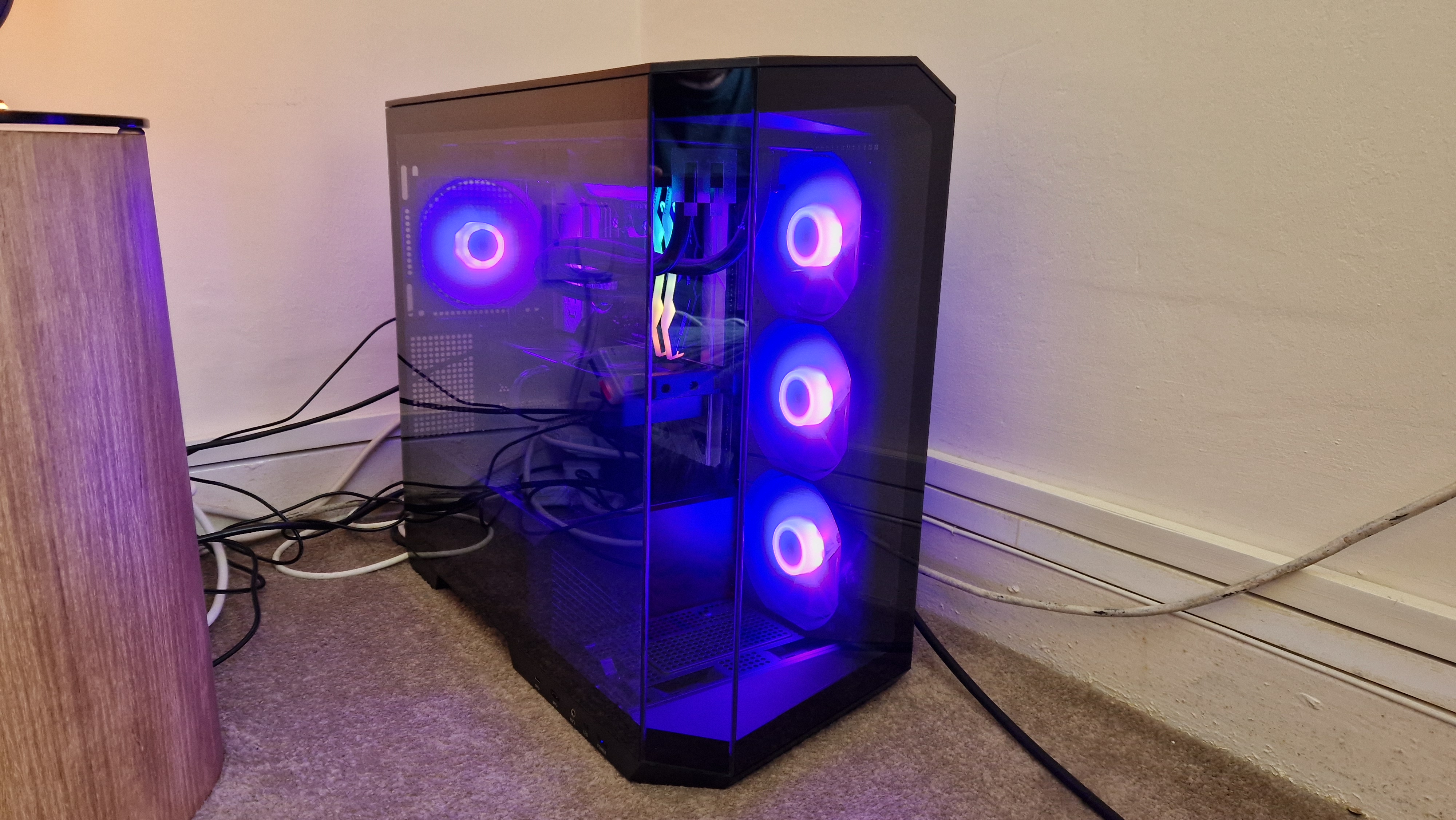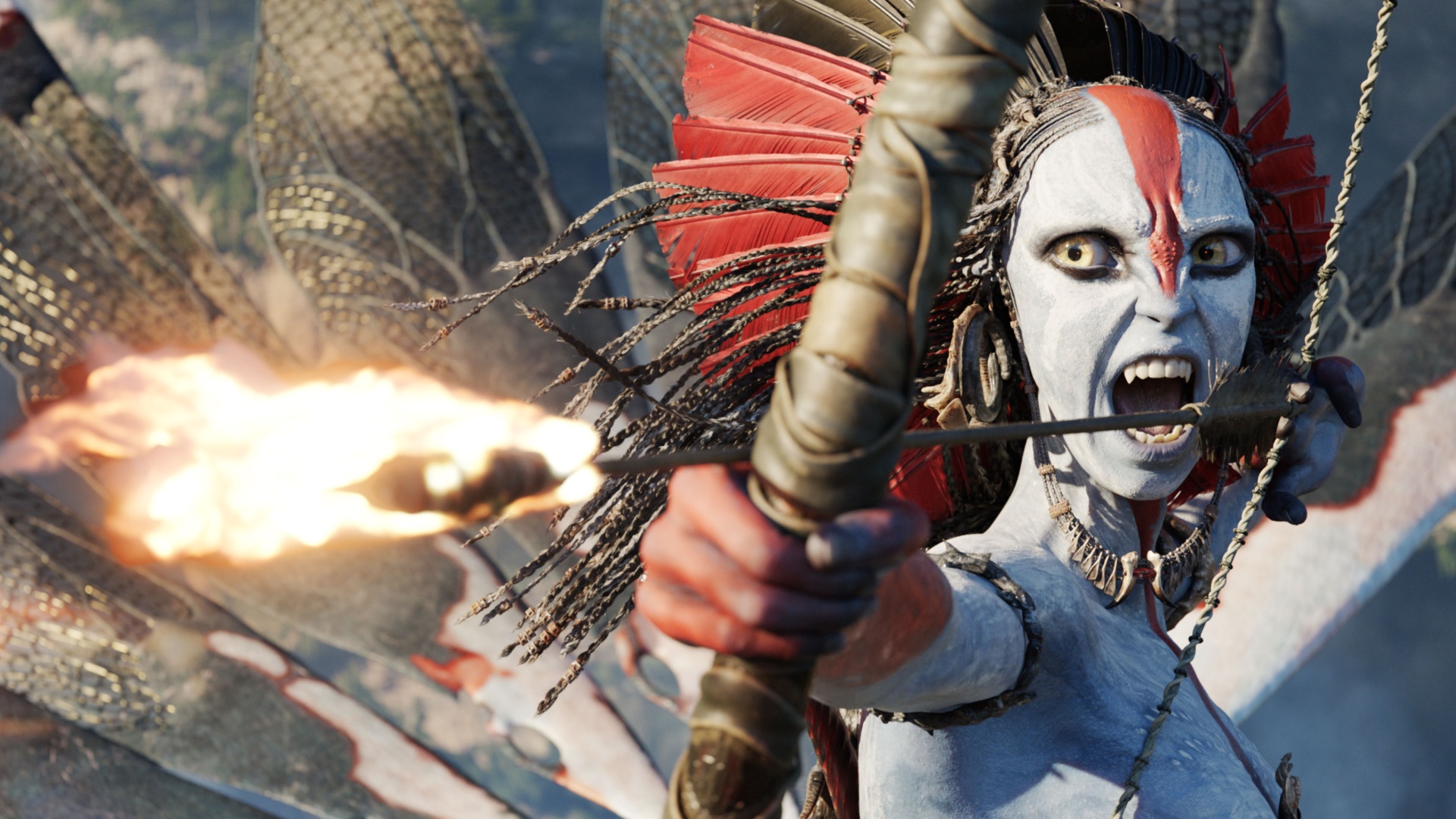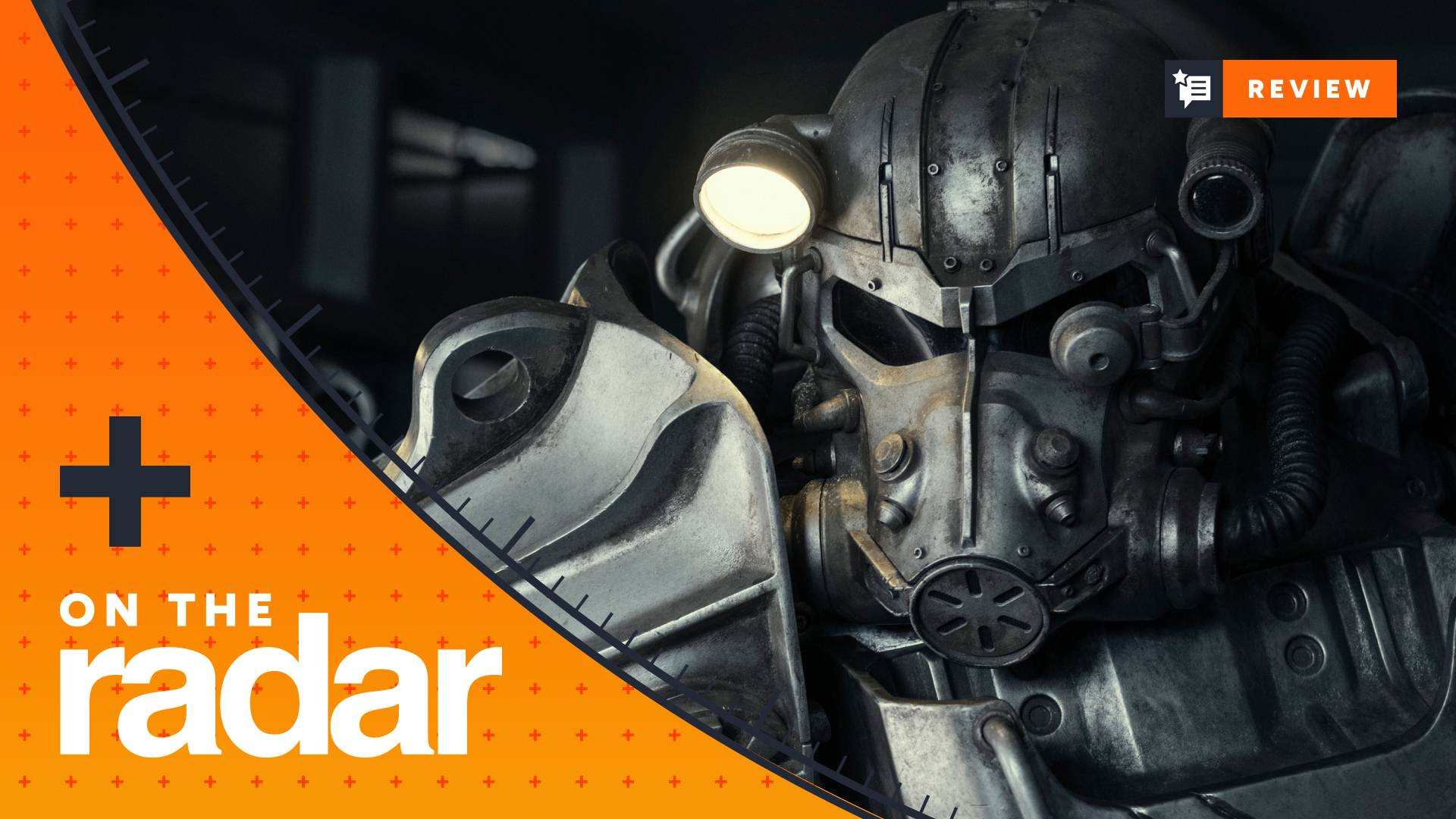GamesRadar+ Verdict
I can strongly recommend the Maingear Zero Ruby. You’ll struggle to find a more up-to-date mid-range configuration, and it rips through 1440p and 4K gaming tasks as a result. More than that, however, it’s an example of how gaming PCs should be. There’s no proprietary nonsense shoved in from the builder, there’s just a monster of a gaming rig that’s ready for you to make your own. Oh, and its cable-free design is pretty gorgeous, too.
Pros
- +
Beautiful, clean, cableless design
- +
Excellent customer experience
- +
No bloatware or proprietary nonsense
- +
Up-to-date configuration
Cons
- -
Only 16GB of RAM for the money
- -
Heavy, fairly large chassis
- -
Boosted version is pricey for what you get
Why you can trust GamesRadar+
I was particularly keen to review the Maingear Zero Ruby because it's one of the first prebuilt gaming PCs to use one of MSI’s Zero motherboards. These route all of their cable headers on their rear, clearing clutter, and streamlining cable management during a build.
In a recent meeting with Maingear's marketing lead, he shared an anecdote - the founder of Maingear actually patented motherboards with rear cable headers ten years ago, but was laughed out of meetings with manufacturers back then. Today, the brand is leading the cable-free charge in prebuilt machines, which will almost certainly become a mainstay for the best gaming PCs.
Sporting some rather monstrous 'mid-range' specs, the Maingear Zero Ruby is available for $2,049 / £1,605 (plus shipping). Admittedly, this is a machine that’s in the uppermost bracket of what you can call mid-range, and you are paying the price for its very up-to-date components. Even so, the reason I'd recommend it to you goes far beyond pure brass tacks, frame rates, or its lack of motherboard cables.
Specs
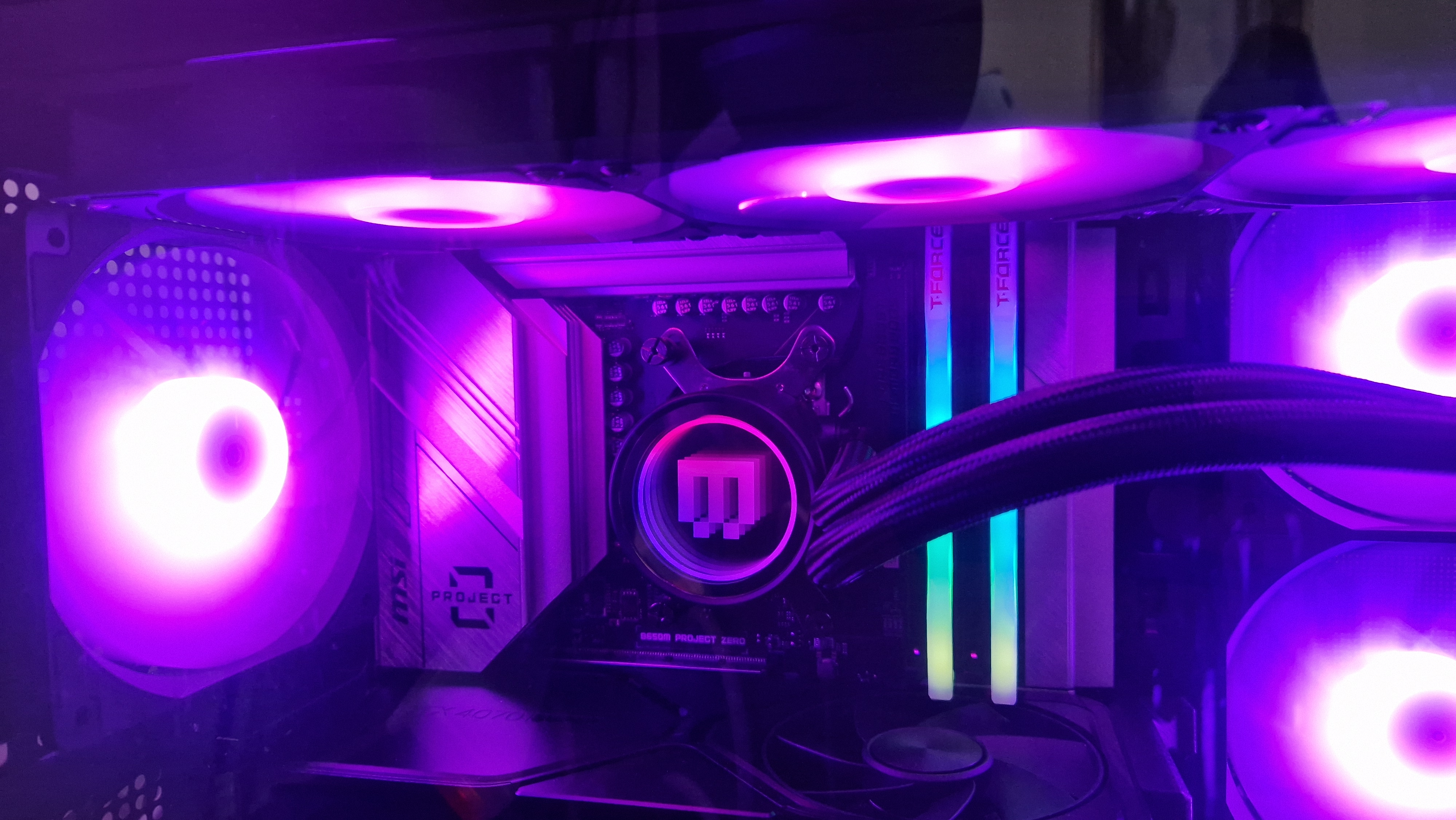
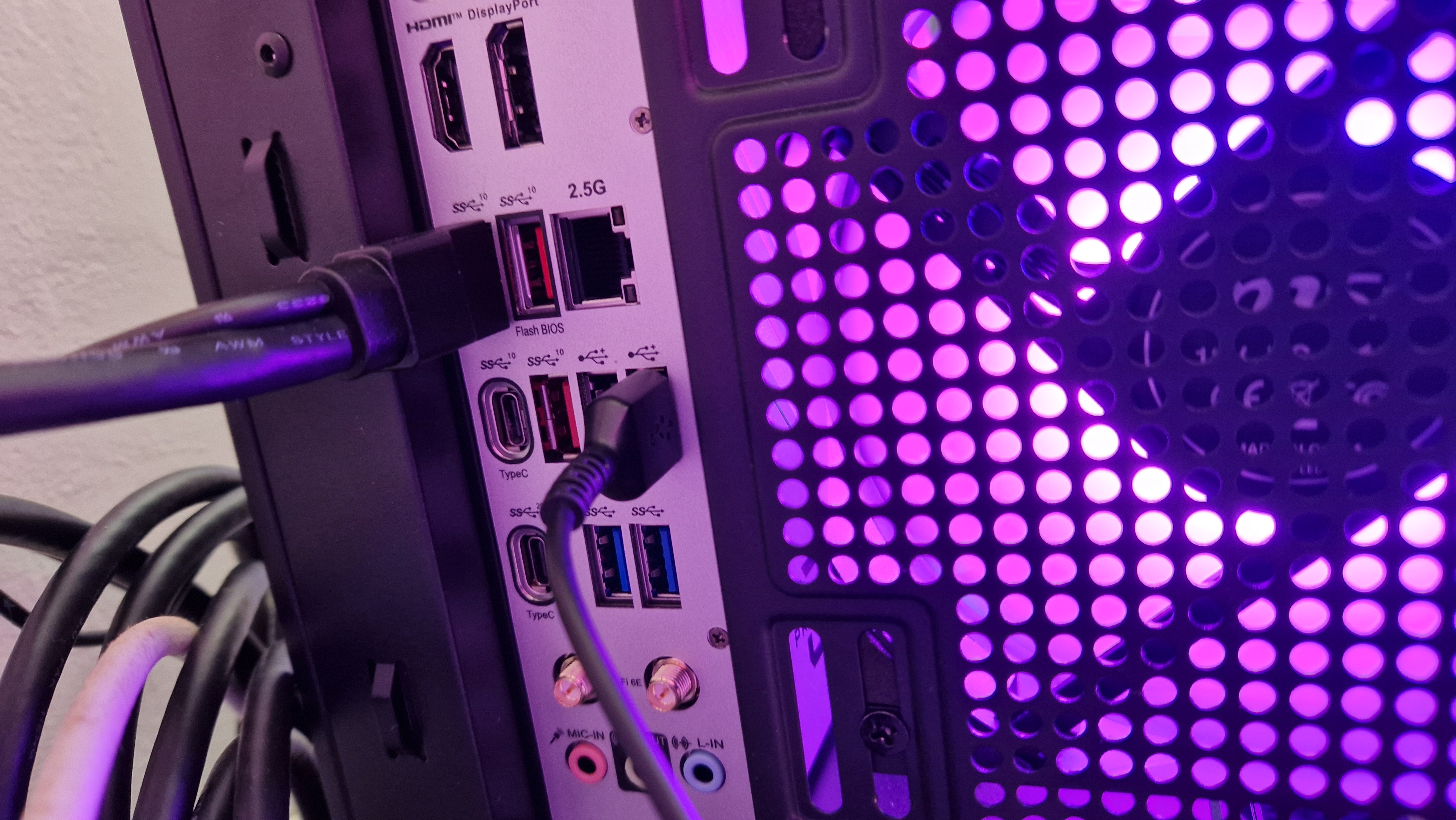
The Ruby sits as a middle-of-the-road option in Maingear’s admittedly expansive menu of Project Zero gaming PCs. It has seven configurations of these cable-free computers in total, ranging from the Zero Silver, powered by an RTX 4060 for $1,349, all the way up to a Zero Ultimate, which is powered by an RTX 4090 and costs $3,849. All, except the Silver, can be “boosted” for a little extra cash, giving you more storage space and memory.
The boosted version of the Ruby gets you Windows 11 Pro as opposed to Home, 32GB of DDR5 instead of 16GB, and a 2TB SSD, not a 1TB drive. All of those upgrades take the price up to $2,249, but in all honesty, probably aren’t worth that additional cost. If you’re patient enough, an extra terabyte of storage and a RAM upgrade can be much more affordable separately.
As someone who reviews the best RAM for gaming, I was skeptical about a PC of this price only shipping with 16GB of DDR5 as standard. For the money you’re paying, 16GB does feel a tad stingy, even if it is DDR5. If I’m totally fair to Maingear though, it never felt like the memory on board was bottlenecking the rest of this rig, which goes to show how much one of the best CPUs for gaming can do these days, and just how effective even a smaller amount of DDR5 can be.
| Header Cell - Column 0 | Zero Ruby configuration |
|---|---|
| Price | $2,049 |
| CPU | AMD Ryzen 7 7800X3D |
| GPU | Nvidia GeForce RTX 4070 Super (12GB) |
| RAM | 16GB of T-Force Delta RGB DDR5 5,200MT/s (2x16GB) |
| Storage | 1TB T-Force Gen 4 NVMe SSD |
| Cooling | Maingear Epic 360mm AIO cooler |
| Motherboard | MSI B650M Project Zero |
| PSU | 850W |
The case Maingear has used for this PC perfectly complements its cableless design. It has three transparent sides so you can peer in at the wonderful components within, and the colorful fans do a grand job of giving it some personality. If I had to nitpick, I’d say the MSI MAG Pano M100 PZ MATX case used is a tad on the heavier side. I know it’s not designed to be an Acer Predator Orion X competitor, but even for a Micro-ATX chassis, it’s fairly large.
Weekly digests, tales from the communities you love, and more
Connectivity is one aspect I’d look into before buying. I was a bit miffed I couldn’t connect up the Elgato Game Capture 4K Pro because there isn’t a spare graphics card slot on the motherboard. There is, however, an extra Gen 4 M.2 SSD slot you can use to add more storage on your own. On the rear IO, the motherboard gives you 2x USB 2.0, 2x USB 5Gbps, 3x USB Type A 10Gbps, 1x USB-C 10Gbps, and 1x USB-C 20Gbps. The case then reinforces this with a front USB-A and USB-C port.
Customer Experience
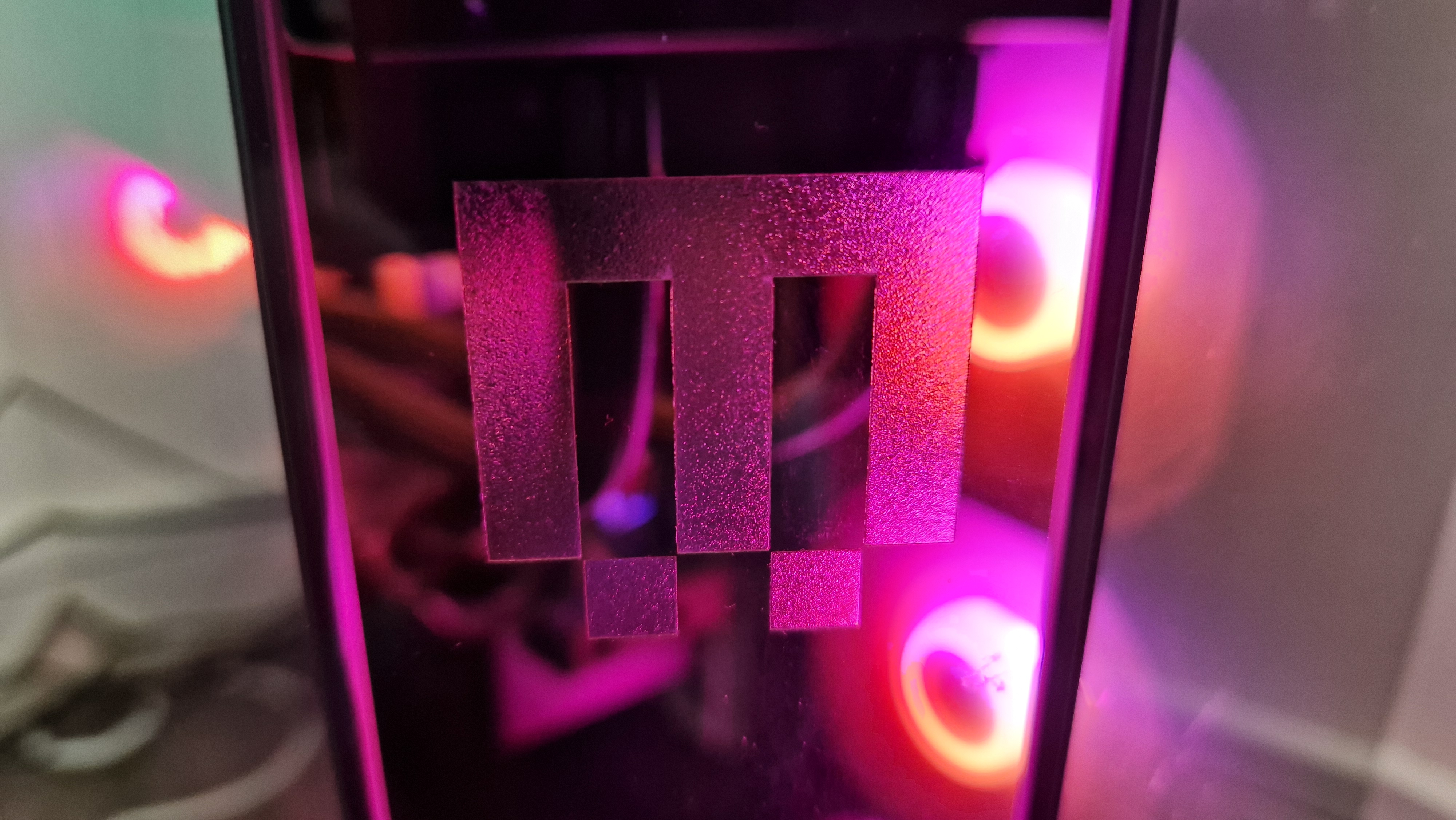
There are two parts of Maingear’s Zero Ruby that I’d like to evaluate in this review. One, of course, is the computer itself. The second part, however, is the customer experience you get with Maingear as a brand, because so far it’s unmatched by the other prebuilt providers I’ve worked with.
I believe the goal of a ready-built gaming PC is to provide ease of access to the world of PC gaming. You want a machine like this to be as plug-and-play as a games console, with everything ready to go out of the box. At the same time, you want something that’s futureproofed and isn’t held back by proprietary nonsense, because that’s the exact thing most converted console players are immigrating to avoid.
Customer experience is so important as a result because prebuild makers have no idea if the person buying a PC is a newcomer grabbing their first-ever rig, or a veteran who wants a new platform they can upgrade down the line. Whoever it is swiping their credit card, these computers are huge investments, and people deserve to be treated well for splashing out on them.
For reference, there’s the likes of Alienware, which makes excellent machines but locks everything behind proprietary walls. There are brands like Acer, who open things up slightly more, while still holding firm to their proprietary Predator motherboards and try their best to hide the parts of their builds that they don’t make themselves.
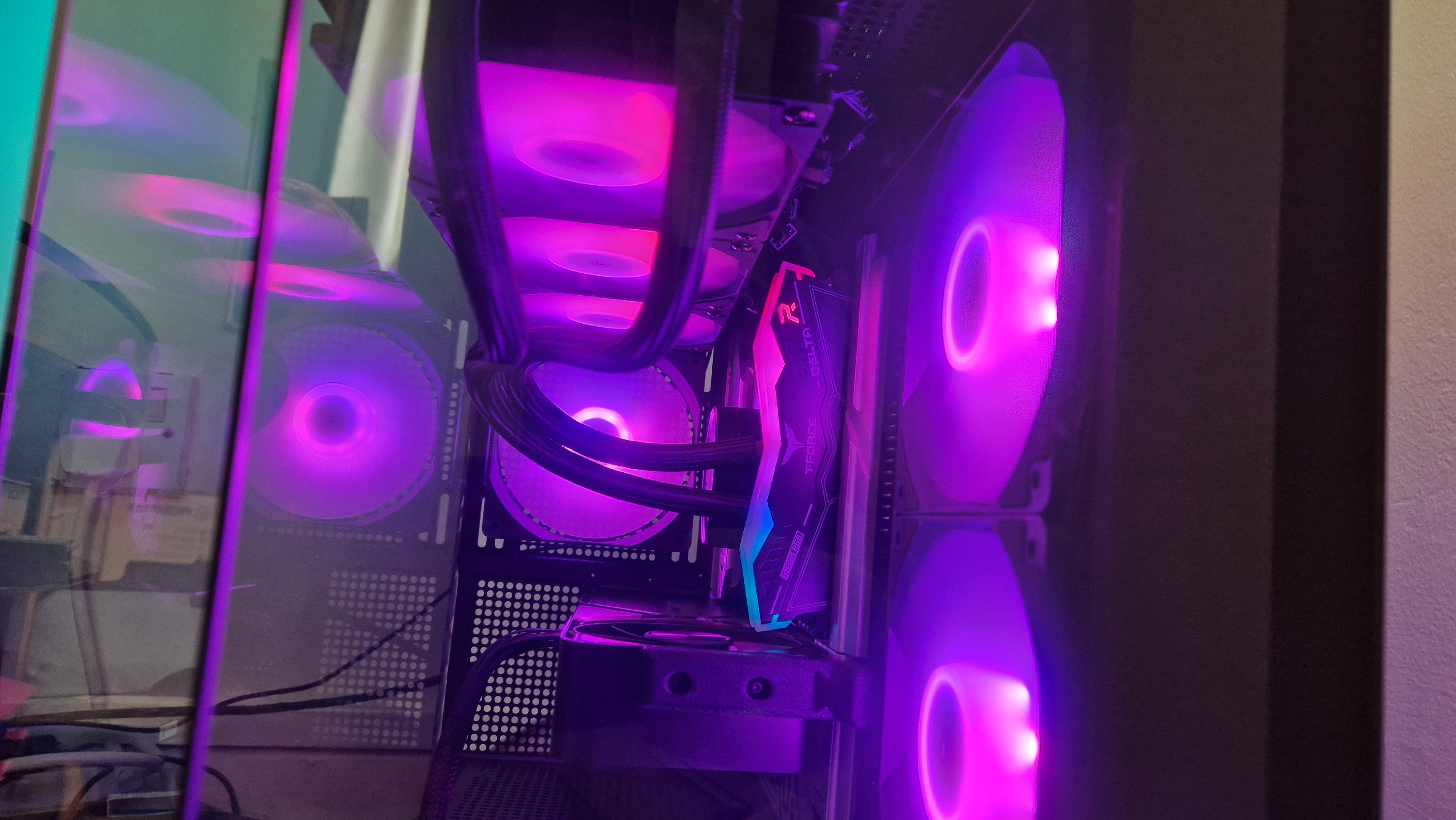
Then, there are brands like Maingear, who build you a pristine gaming rig, are transparent about the parts used, and lock nothing behind proprietary annoyances. The BIOS is MSI’s own in this build because that’s the motherboard’s manufacturer. There’s no bloatware competing for your CPU’s attention, and the drivers that are preinstalled during the build are only the absolutely necessary ones.
In the box, you get crystal clear start-up instructions in case setting up your first gaming PC is intimidating. A checklist of quality assurance tests lies underneath, filled out by your builder before shipping. That’s the mark of quality from a brand that cares about its customers - the kind of thing you get when you open up a Rode product, for example.
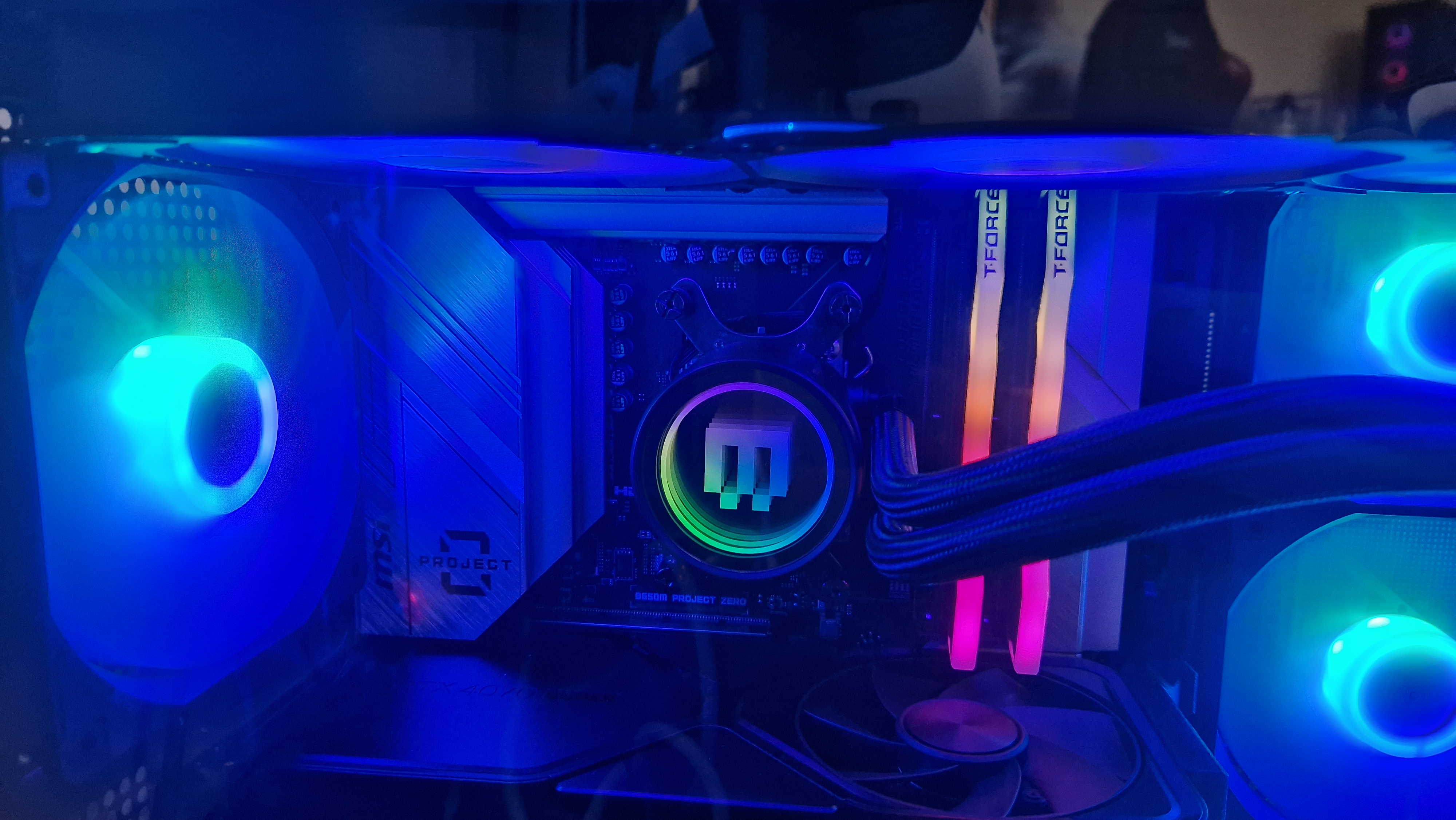
Maingear seems to stop at nothing in pursuit of that customer service. Their phone lines are manned six days a week, their engineers are gaming hardware nerds, and their packaging is drop-tested to ensure the unique foam they use protects PCs throughout even the roughest shipping journeys. Perhaps my favorite thing to note is that even after your standard one-year warranty expires, your PC will be viable for lifetime support that’s tied to an individual PC, not the original owner who made the purchase. That means if you sell your computer or give it away to a friend later, the next owner can quote a small serial number on a customer service call and still receive help from Maingear. This is exactly how prebuilt gaming PCs should be - from experience, to support, to the lack of proprietary hindrances.
Performance
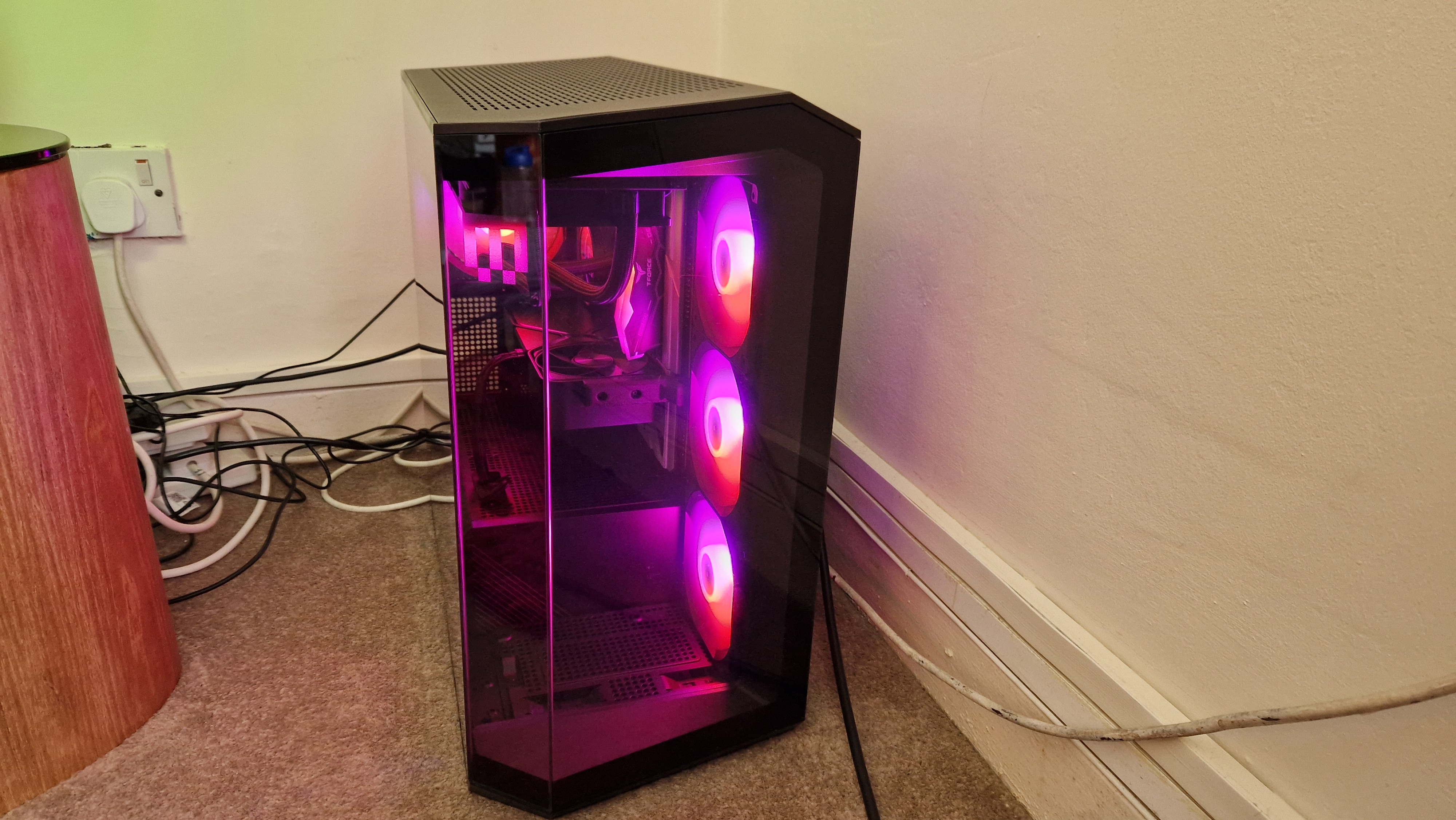
To begin, I want to compliment whoever built the PC Maingear sent me. It is pristine. Not one cable is awkwardly poking out and disturbing things, the innards are neat and tidy, and I love that there’s a custom GPU bracket that comes in every Maingear PC that’s removable. There’s clearly a lot of care and attention to detail that’s put into building these PCs, and that’s not always the case.
I’ve been using this PC as a daily driver PC for work and gaming for around a month now. Daily gaming tasks are easy for it, with my most-played game Hunt: Showdown being flung out at 84fps with 4K, maxed-out settings. Senua’s Saga Hellblade 2 achieves 87fps with custom 4K settings, and less technically demanding games like Not For Broadcast give it no trouble at all.
Cinebench:
Multi Core: 18291pts
Single Core: 1788pts
3DMark:
TimeSpy: 18,697
Firestrike: 40,129
Steel Nomad: 4573
CrystalDiskMark:
Sequential read: 7,359 MB/s
Sequential write: 6,072MB/s
CPU-Z RAM timings:
40-40-40-76
Then we have our testing suite of games and software designed to make these PCs sweat. To begin with, industry-standard benchmarks were on par with my expectations, although the CPU didn’t do quite as well in Cinebench as I would have thought. On the other hand, I noticed that during these intense workloads, the Ryzen 7 7800X3D processor stayed cool, peaking at 72°C. Credit has to go to Maingear’s own AIO cooler there because it keeps both central components thriving.
In gaming benchmarking, I was pleasantly surprised with the frame rates in 4K and 1440p. For a GPU with only 12GB of VRAM, I was delighted to see some really decent organic 4K scores. When I reviewed the RTX 4070 Ti, I found that it relied on its upscaling tricks a bit more than other graphics cards over $700, but the 4070 Super feels more honest.
| Row 0 - Cell 0 | 4K Ultra | DLSS | Ray Tracing | DLSS + Ray Tracing |
| Returnal | 49fps | 100fps | 44fps | 87fps |
| Hitman | 104fps | 123fps | 27fps | 65fps |
| Shadow of the Tomb Raider | 92fps | 134fps | 62fps | 98fps |
| Total War: Warhammer 3 | 57fps | x | x | x |
| Row 0 - Cell 0 | 1440p Ultra | DLSS | Ray Tracing | DLSS + Ray Tracing |
| Returnal | 85fps | 145fps | 78fps | 165fps |
| Hitman | 181fps | 262fps | 54fps | 159fps |
| Shadow of the Tomb Raider | 178fps | 244fps | 120fps | 182fps |
| Total War: Warhammer 3 | 99fps | x | x | x |
Ray tracing tasks were handled well, I thought. Returnal and Hitman 3’s 4K, non-DLSS, fully ray-traced benchmarks still make the Ruby struggle, but for something with a 12GB GPU, things could be a lot worse. Nvidia’s prowess certainly still shines through when it comes to ray-tracing, which is easy to see compared to the AMD Radeon RX 7800 XT I use in my own build.
As expected, Quad HD scores were pretty ludicrous when DLSS and frame gen were doing their thing. Even organically, the 4070 Super can churn out triple-digit frame rates in 1440p - with the exception of Total War: Warhammer 3 and Returnal, where it isn’t far off. With DLSS super-charging it, you’ll easily cap out your best gaming monitor’s refresh rate in the majority of games.
Boosting the resolution even higher, 4K60 is more than achievable if you tune down a couple of settings. This is what I do as a general rule for my PC gaming, and the Ruby hasn’t let me down thus far.
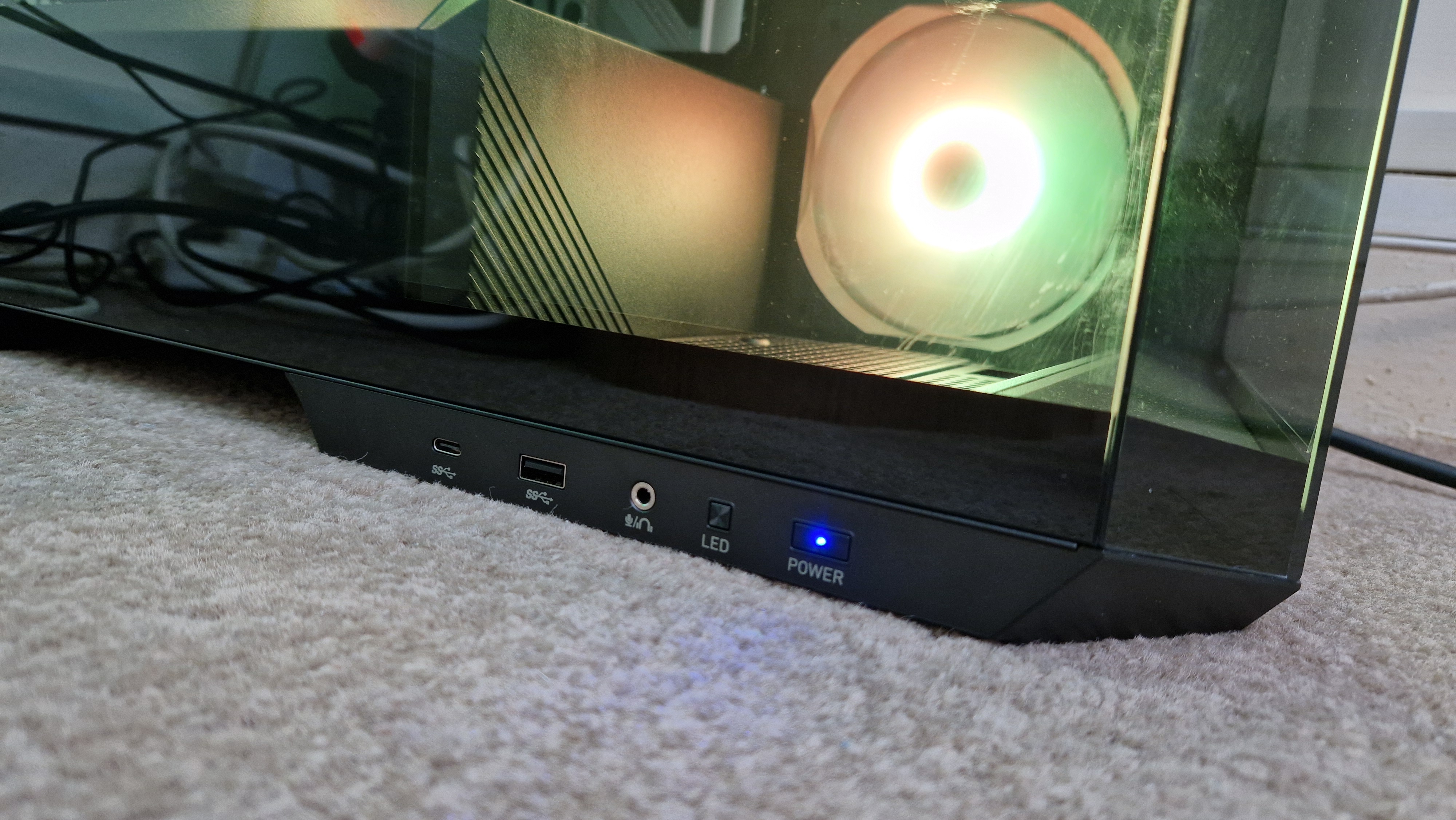
In general use, I’ve not run into any issues with this build. Being free of bloatware means it’s been so easy to use the Ruby for daily work and as a content creation machine. The only small error, if you can call it one, is that the CPU’s integrated graphics were still enabled out of the box, which can be known to cause some performance issues. I did love inspecting the motherboard’s BIOS though, because there was nothing there that signaled Maingear had planted anything of their own in the mix. I found two AMD EXPO profiles waiting for me, and these allowed me to boost the RAM to its advertised speed of 5200MT/s from its out-of-the-box speed.
Special credit is given to the T-Force SSD Maingear has supplied this PC with. I haven’t had the pleasure of testing out T-Force’s SSDs until now, but this one is easily on par with the best SSDs for gaming on the Gen 4 ladder.
Should you buy the Maingear Zero Ruby?

I can wholeheartedly recommend this gaming PC. If you’re looking for the most up-to-date mid-range prebuild at the moment, you’re going to struggle to beat this in terms of its parts. They all work together beautifully in Maingear’s name, and for either 1440p or 4K gaming, it really is a top-notch gaming PC.
It isn’t perfect, mind you. I’d argue the price is a tad high for the median stop in the Project Zero family, and I’d have liked to see 32GB of memory for the investment. It is also a bit of a hulk for a micro-ATX PC. Luckily, its cable-free design is the trendsetter I thought it would be, and it really is stunning to behold.
Even if you don’t go for a Maingear Zero Ruby, Maingear is a brand that should be on your radar if you’re shopping for a gaming PC in the future. It provides some of the best customer experience of any prebuild maker I’ve worked with, and its team in New Jersey shares your disdain for proprietary frustrations.
How we tested the Maingear Zero Ruby
I put the Maingear Zero Ruby through the wringer before writing this review. I tested it as a general-use machine for gaming, work, and content creation. I mainly played games in 4K, playing a wide variety of games to test out its high-end power. For more scrupulous testing of its individual parts, I used industry-standard benchmarking software like 3DMark, Cinebench, and CrystalDiskMark. I then ran it through our usual host of demanding benchmarking games in 4K and 1440p.
Check out the full GamesRadar+ Hardware Policy to read more about our testing methods.
Looking for other gaming platforms? Check out the best VR headsets, the best gaming laptops, and the best gaming handhelds.
One of my earliest memories is playing SuperMario64 and wondering why the controller I held had three grips, but I only had two hands. Ever since I've been in love with video games and their technology. After graduating from Edinburgh Napier University with a degree in Journalism, I contributed to the Scottish Games Network and completed an Editorial Internship at Expert Reviews. Over the last decade, I’ve been managing my own YouTube channel about my love of games too. These days, I'm one of the resident hardware nerds at GamesRadar+, and I take the lead on our coverage of gaming PCs, VR, controllers, gaming chairs, and content creation gear. Now, I better stop myself here before I get talking about my favourite games like HUNT: Showdown, Dishonored, and Towerfall Ascension.
